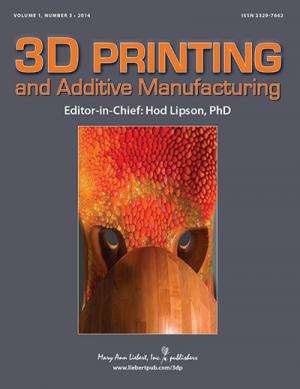Novel 3-D printing process enables metal additive manufacturing for consumer market

Lower-cost 3D printers for the consumer market offer only a limited selection of plastic materials, while industrial additive manufacturing (AM) machines can print parts made of high-performance metals. The application of a novel process called Selective Inhibition Sintering (SIS) in a consumer-priced metal AM machine is described in an article in 3D Printing and Additive Manufacturing.
Payman Torabi, Matthew Petros, and Behrokh Khoshnevis, University of Southern California, Los Angeles, explain this innovative process, present sample parts printed using the technology, and discuss the next steps in research and development in the article "SIS—The Process for Consumer Metal Additive Manufacturing" The SIS process differs from traditional research in powder sintering, which focuses on enhancing sintering (a process of fusing materials using heat and pressure); instead, SIS prevents sintering in selected regions of each powder layer.
"This technology uses a fundamentally new approach to 3D printing, one that could expand the reach of metal printing," says Editor-in-Chief Hod Lipson, PhD, Professor at Cornell University's Sibley School of Mechanical and Aerospace Engineering, Ithaca, NY.
More information: The article is available free on the 3D Printing and Additive Manufacturing website until December 6, 2014.
Provided by Mary Ann Liebert, Inc





















